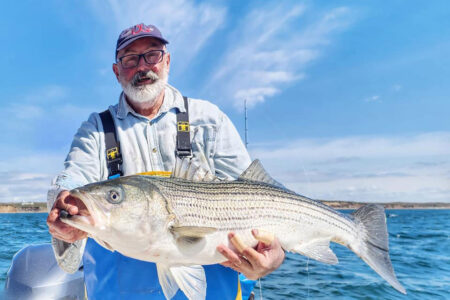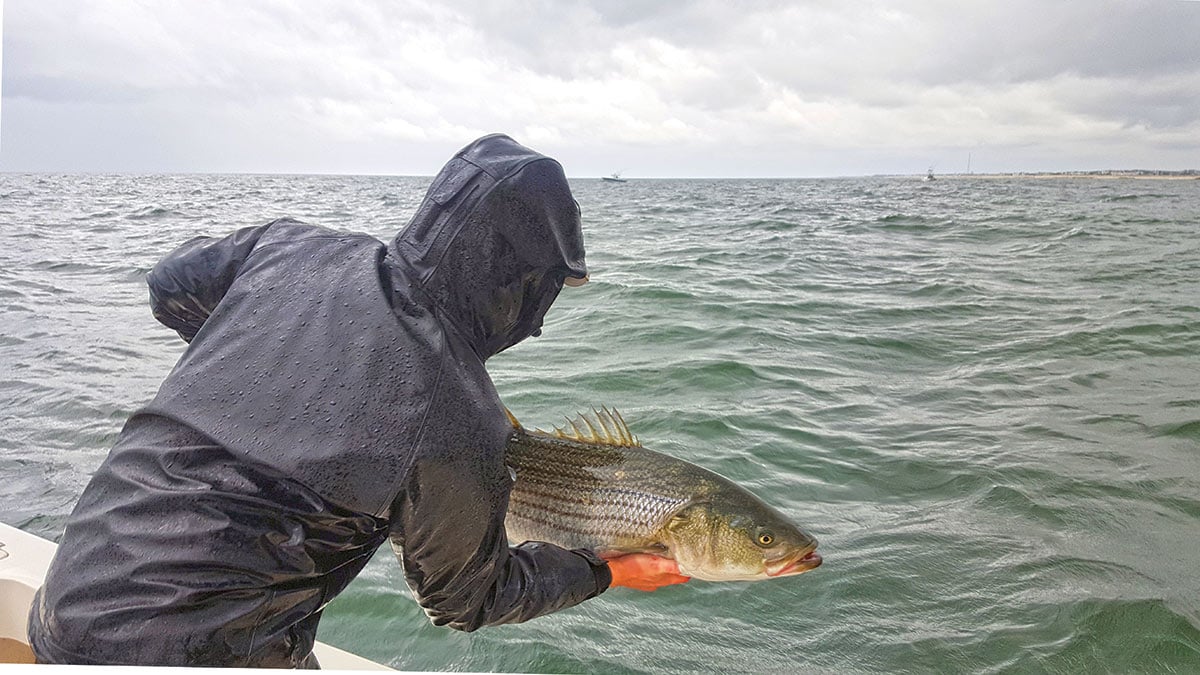
For big striped bass, the best action of the season has yet to come, you can bet your bunker on that!
For some folks May has always signified the ending of the spring run of striped bass at the Jersey Shore; but for many guys they know it’s just the beginning.
When March first approaches, and the fish start to move there are many layers of the run, from small schoolies to 20-pound fish that run into early April. Then as April swings by many of the larger breeding class of fish starts to come out of the rivers where they were spawning and begin to feed again along the coast.
In New Jersey we have a few main river systems we get the chance to hunt these large fish, like the Delaware, the Great Egg, Mullica and on up into the Raritan and Hudson complex. May happens to be one of my favorite times of the year to fish, because the water temps and air temps are at a perfect mix, which really gets these fish to eat.
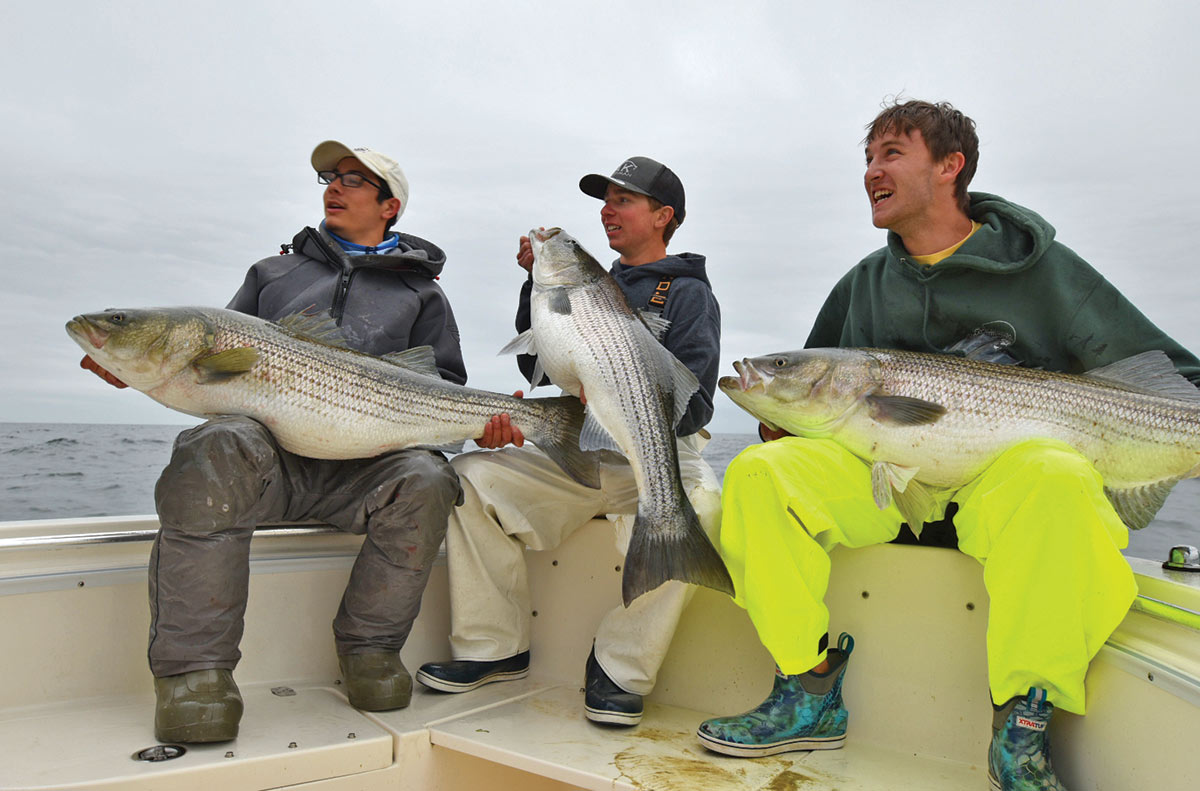
All About the Bait
May is also a great month for the ocean guys—boaters and surfcasters alike—as schools of bunker begin to come closer to the beach. With big baits come big fish, meaning big presentations in the form of plugs, mojos and spoons, which are able to hit that deep line where trophies are waiting. Stripers often get locked into the bait that they are feeding on, particularly this time of year with bunker on the move.
Snagging or castnetting baits for livelining comes into play heavily this month. Typically you hear the reports of “snag and drop” stripers, but I prefer a simple livelining rig with a circle hook in the nose of the bait. Hands down though, my favorite technique this time of the year, especially from the boat when you have fish locked in on a bait like packed schools of bunker, is to throw big plugs at them like a 9-inch Drifter Doc or a Flat Guppy pencil; big metal lips also allow you to see how these big stripers hit a lure. When you have fish push bait to the surface I would highly suggest throwing some of these big plugs; honestly, it’s something that all fishermen dream of.
The spring of 2018 was one of the best spring runs I have personally seen, yet many guys were not out there fishing. This is an awesome time of the year, and of all the little tips and tricks that I picked up on last season, the biggest consideration was that there are two best opportunities to catch these fish—sun up and sun down.
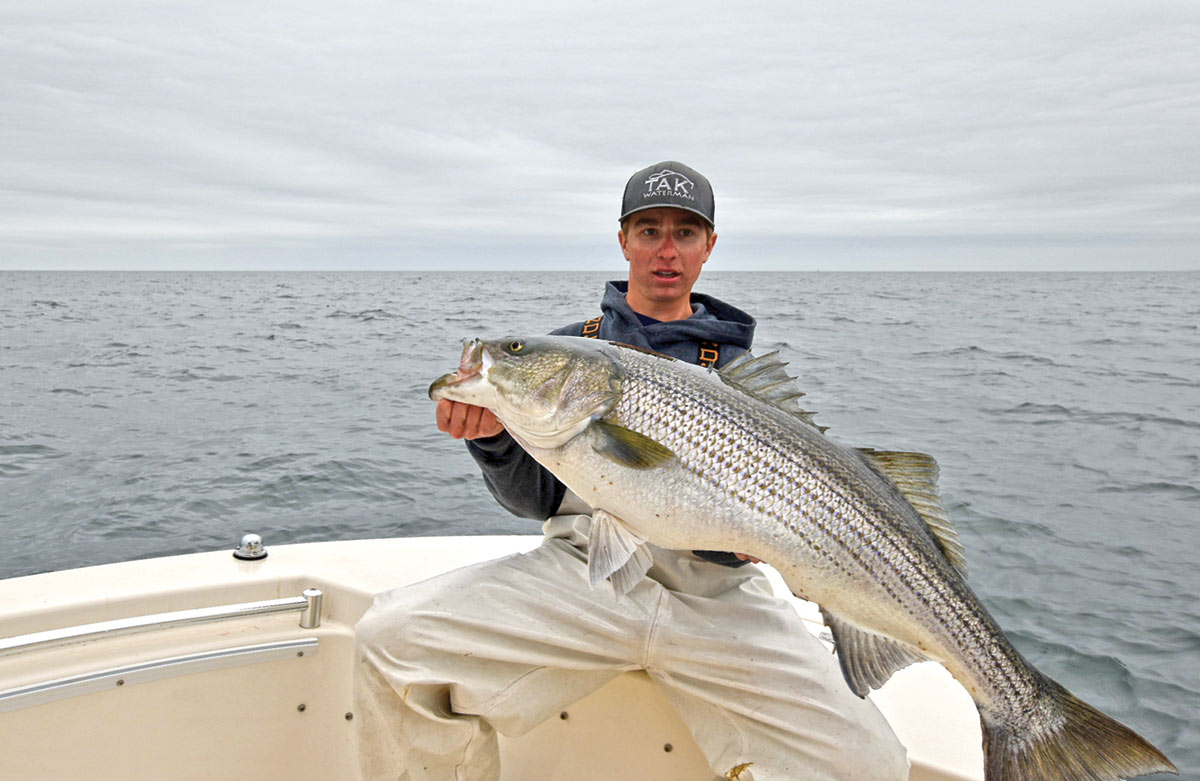
Plugging Away
If you’d prefer to keep away from wireline trolling bunker spoons or dragging plugs and mojos near the bottom on braid, start looking for those bunker schools especially at dawn and dusk. The liveline bite seems to be one you can get on both day and night, but it seems that as the sun is beginning to set these fish become very aggressive and start to feed heavily; this is the perfect time to break out the pencil popper and start walking the dog for a crushing surface bite. If you’ve spent any time at the Jersey plug shows over the winter and collected a box of new toys, throw those fancy metals lips around the bunker schools and see if you can’t hang a slob on one.
One of my favorite animals, and a tell tail sign of bunker in the water, is the humpback whale. We find these animals along our coast from April to November, and they love bunker. Also keep your eyes up looking for birds. They are always a sign that bait is in the area, and there could be fish pushing it to the surface.
The important thing to remember about spotting bunker is that when the signs aren’t there you can always use your fishfinder, though I have noticed that during this time of the year the fish are so locked in on bait that you won’t find fish feeding on the pod; instead they may be hanging low or in the middle of the water column. Often you will find a lot of the pods tightly packed and on the surface, which is easy to see; but on rough and cloudy days it is about distinguishing water color to find the bait. Once you find bait on the finder or spot where bait is pushed to the surface, your chances of finding the stripers is greatly improved. I like to beef up my tackle a bit this time of year, opting for a 5000 size reel with a medium heavy to heavy rod weighted for up to 2 to 3 ounces and from 7 to 8 feet long for both livelining and plugging. I fish anywhere from 30- to 50-pound braid on my reels; as long as you set the drag correctly, there will not be any issues. Leader material is where many guys disagree; I use 40- to 50-pound mono leader for these fish.
Grab a good conventional outfit for livelining and also the spin gear for snagging baits or tossing plugs. As you’re climbing out of the truck before dawn, don’t forget to grab the polarized glasses off the dash; a good set of polarized will help immensely when it comes to spotting those bunker pods off the Jersey Coast this month.
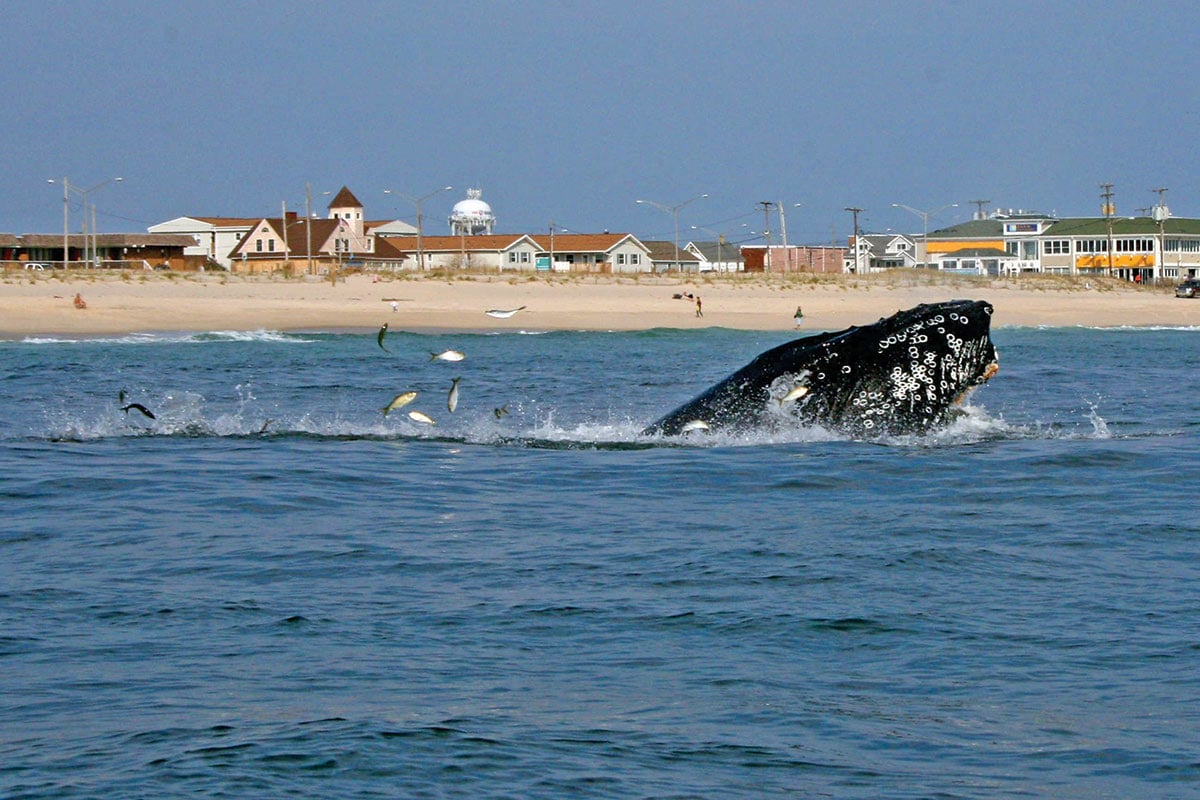
| BUNKER MANAGEMENT |
|---|
|
According to the Atlantic States Marine Fisheries Commission (ASMFC), the most recent 2017 stock assessment update indicates that Atlantic menhaden are neither overfished nor experiencing overfishing. ASMFC is presently working on two separate menhaden stock assessments that will be peer-reviewed later this year. There are distinct commercial fisheries for menhaden, bait and reduction. The coastwide bait fishery supplies fishermen with bait for popular species including lobster, crabs, striped bass and bluefish and comprised approximately 25 percent of the total harvest. The majority of bait landings come from New Jersey and Virginia, followed by Maryland, Massachusetts, and the Potomac River Fisheries Commission. Since 2005, there has been only one remaining reduction plant in operation on the Atlantic coast, which processes menhaden into fishmeal and fish oil. The plant is located in Reedville, VA and is responsible for roughly 75 percent of total coastwide landings of menhaden. It is illegal to harvest bunker in New Jersey state waters (up to 3 miles from coast) for the purpose of reduction. |


